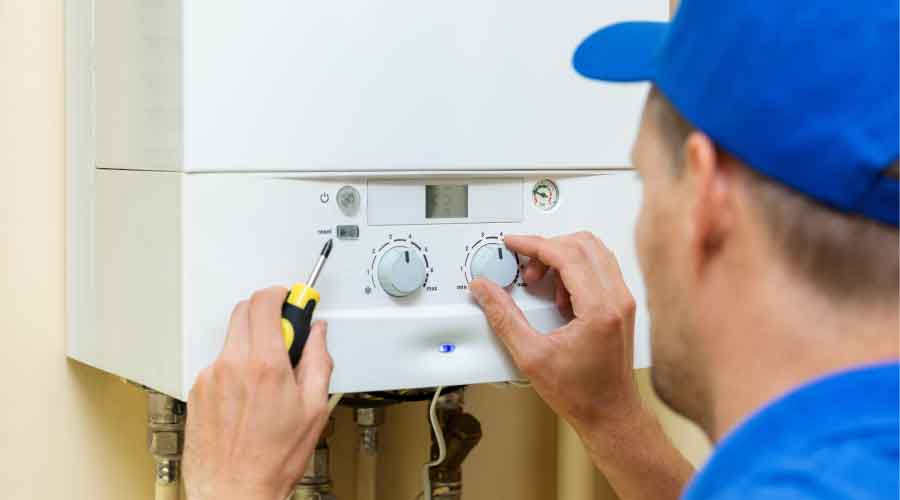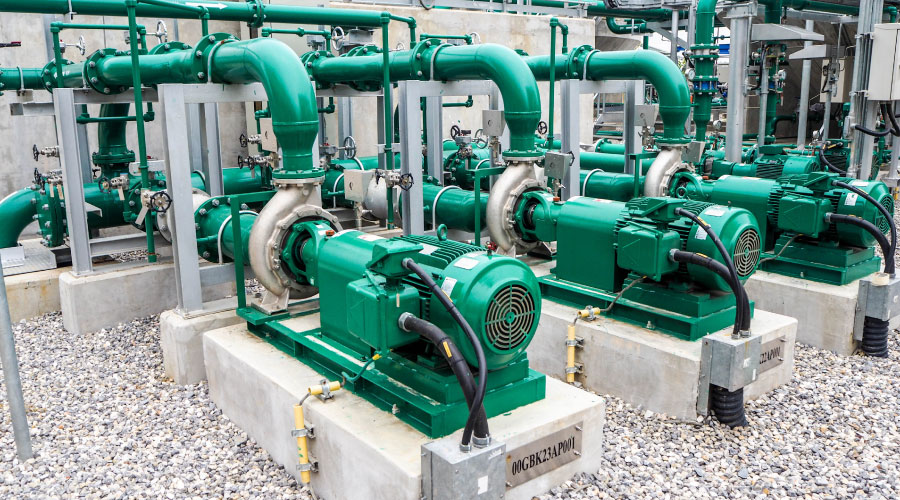Boiler Performance: Strategies and Tactics
Long-term energy-efficiency requires close attention to a range of factors, including operator experience and proper system maintenance
Boiler operation and maintenance are closely tied together. Good operation includes performing necessary daily and periodic maintenance, while low maintenance costs depend on a good daily operating control.
The efficient operation of a steam generator — whether it is a low-, medium-, or high-pressure design — is a complex undertaking. Important physical and chemical balances are mandatory for safe and efficient control. So to improve efficiency and hold down energy costs, engineering and maintenance manages need to pay close attention to the entire range of factors that affect boiler performance.
Personnel Matters
The technology that goes into boilers often gets much of the attention when organizations look for greater energy efficiency, while the staffing component goes overlooked. In reality, the training and experience of boiler operators can go a long way in determining the system’s efficiency.
The boiler operator, sometimes called a stationary engineer, powerhouse engineer, or power plant operator, is a custodian in the sense that he or she must give a high degree of attention to the equipment and instrumentation through all operating conditions until complete shutdown.
Whenever the boiler is pressurized — 15 psi or more — an operator must be present, 24 hours a day, seven days a week. The need for full-time supervision results in some unusual scheduling requirements. Often, four operators are on a revolving schedule with one operator off at any one time.
The operator performs all phases of mechanical operation and maintenance. The only assistance generally required is with the electrical and instrumentation repairs. An electrician might be assigned to maintain high- and low-voltage electrical equipment because it is so specialized. This usually includes power-plant equipment and instrumentation, as well as electrical distribution systems in the rest of the plant.
The well-being and reliability of all the other operational activities and support systems rest on these two groups of duties and their effective scheduling.
Optimum Efficiency
The primary duty of the boiler operator is to achieve optimum operating efficiency of the equipment consistent with high reliability and low cost. The steam generator’s efficiency generally depends on four key elements:.
• TIME AND TEMPERATURE. Before a boiler begins to achieve efficient operation, the furnace must be raised up to operating temperature. The fuel-burning rate must be maintained to produce the desired number of pounds of steam per hour to run the steam turbines — if the facility generates it own electricity — and supply steam for heat and process needs.
• TURBULENCE. Fossil-fuel boiler systems produce turbulence by combining forced-draft fans located in the fuel supply section and the induced-draft fans located in the stack breeching. Drafts introduced by these large-volume air handlers produce the turbulence needed for efficient operation. They also create a demand for emission controls, which are very important to air quality strides being emphasized today, and whose emphasis in the future will only be greater.
• OXYGEN. The oxygen supply comes both from the air supply and volatile constituents in the fuel.
The proper balance of these four characteristics is the continuing challenge of the boiler operator, demanding full attention on every shift.
Efficiency and Maintenance
Modern equipment contains very effective instrumentation for controlling the four key operating characteristics mentioned earlier. Simultaneous with operating control, these instruments provide the indicators that can help managers predict when and what maintenance is required.
During daily operations, the operator prepares logs with information collected from instrumentation at frequent enough intervals to detect problems early. This early detection is critical to operating efficiently and to controlling costs. To understand this control sequence, it is necessary to look at some of the common types of equipment and their make-up.
The furnace and steam-generating boiler are made up of: a setting, or support structure; a fuel-handling and -supply system; a fuel-burning control system; space above the fuel for heat transfer by radiation and convection; boiler tubes for conducting heat to the water, boilers for steam generation and storage; air and ash-handling equipment; and support components that can include condensers, pumps, deaerators, water softeners, and soot blowers.
For smaller steam requirements, managers might consider high-efficiency packaged boilers and steam generators. Where loads tend to fluctuate greatly, or where frequent start-ups and shutdowns are necessary, managers might prefer to install several smaller packaged units, rather than one large furnace and boiler.
Selecting Equipment
Factors that influence the selection of the most appropriate fuel-boiler combination are fuel characteristics, availability and cost, capacity and steam conditions required for various end uses, space needs and subjective preference considerations.
Low moisture, ash and sulphur content, and high heating value are desirable fuel characteristics. Moisture, ash and sulfur cause equipment problems that such as abrasion and corrosion. Sulphur and ash cause air pollution. High levels of volatile matter — including hydrogen, oxygen and high fixed carbon — yield high heating values and more Btus per pound of coal.
Pulverized coal, single-retort stoker, traveling grate stoker and stationary grate equipment are best for anthracite coal. While this equipment also will burn bituminous coal, multiple retort, chain grate and spreader stokers also will burn bituminous coal. Gas and oil burners have fuel lines piped into the burner, but coal-fired equipment requires very complex and expansive handling equipment to move coal into the fire box or furnace setting.
Coal, oil, and gas equipment can continually provide 1,000-1 million pounds of steam per hour. At the highest capacities, choices narrow to pulverized coal, oil and gas. At this level, fuel must burn very fast and efficiently to sustain a high steam-generation rate.
By comparing the type of fuel-burning equipment and the fuel to be used, managers can calculate the grate area for the steam generation required in pounds per hour. This data are approximate and might vary depending on auxiliary equipment and condition of the furnace.
Failure Causes and Prevention
The primary cause for boiler failure during operation is low water. According to authorities on boiler explosions, about 75 percent of failures are due to this cause. The main cause for this high level of accidents is the assumption that little or no attention is required because of redundant automatic controls installed on boilers. Without regular operating and maintenance controls, a series of automatic control failures can occur preceding an explosion.
First, the automatic feed device fails, causing the low-water condition. Then, the low-water fuel cutout fails to sense the condition and stop the fuel supply. Third, the safety pop valve fails to actuate to relieve the built-up pressure.
Even though all of these devices are automatic, they have a finite life span under the conditions in which they operate. Mechanical wear, fatigue, corrosion and erosion take their toll.
The following four steps will help managers and operators ensure a highly reliable boiler and prevent failure.
• Match the best equipment available with the type of service and fuel required.
•Verify proper equipment installation, including all necessary controls and safety equipment, by having the installation checked annually by the insurance company’s service representative.
• Specify a system inspection by an authorized insurance company before acceptance. Specifying this step as a part of the installation contract ensures that all ordinances are met and that good installation practices are followed.
• Provide the operator with a log book for recording daily events and a preventive maintenance program for regular daily, weekly, monthly, semiannual and annual maintenance procedures. These procedures should include repair, replacement, inspection, cleaning, lubricating and testing that is done periodically and can be scheduled annually.
Managers should follow these procedures with appropriate training, as well as operating floor visits, to be absolutely sure that operators: develop and follow good habits; log all important events, including unsafe conditions, or problems with operations, equipment or fuel; perform preventive maintenance correctly and on time; and correct observed problems or notify higher managers when necessary.
Related Topics:











